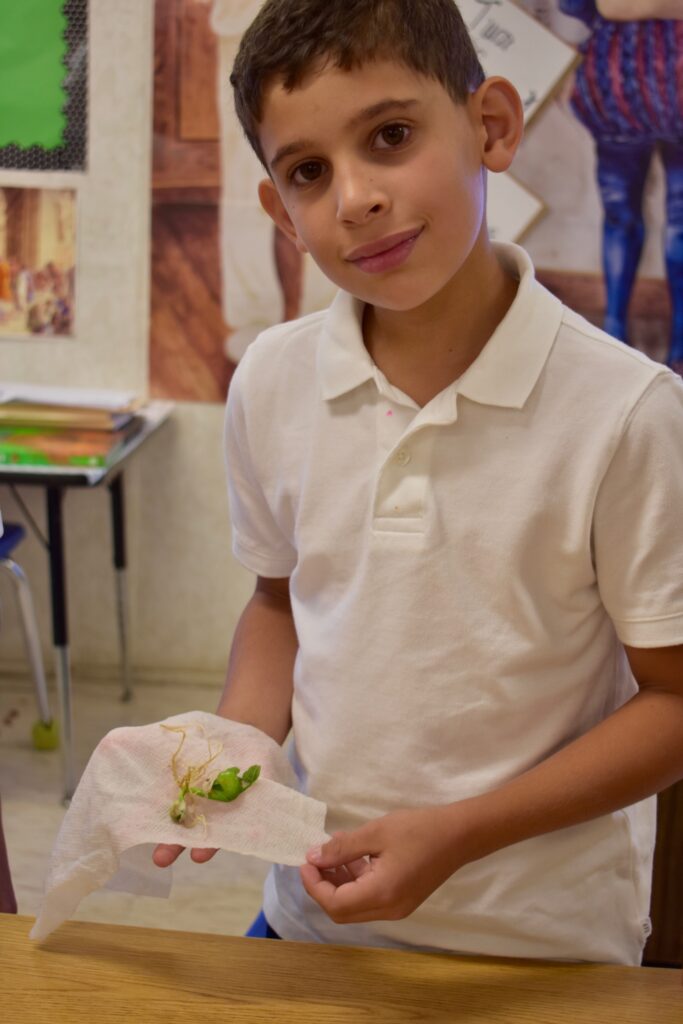Understanding the scientific method is second nature to third graders in Mrs. Mullins’ science class at Wakefield Country Day School. Currently engaged in a study of lima beans, students will watch the progress of their beans over the course of a week and detail the steps in their project. “First we make an observation,” reports Laith Kassira, 3rd grader. “We then make a good guess, called a hypothesis, about what will happen next. We’re going to wait one week and see what happens to our beans, collect every kid’s information, and then we’ll come up with an answer, called a conclusion. So far, I think my bean has grown the most, so I feel great about my experiment. My hypothesis was that it would sprout in five days, but it sprouted in just two.” Mrs. Mullins, 3rd grade science teacher, says “My students really respond to hands-on learning. Being able to see things actually change from day-to-day gets them excited to keep investigating. What they learn in elementary school are the building blocks for the larger projects they’ll take on in middle and high school in environmental science, chemistry, physics and forensics, so giving them a solid foundation is important. Plus, they just love it!” Wakefield Country Day School is proud to continue its 46-year record of 100% college acceptances. Merit scholarships are still available for this school year.

